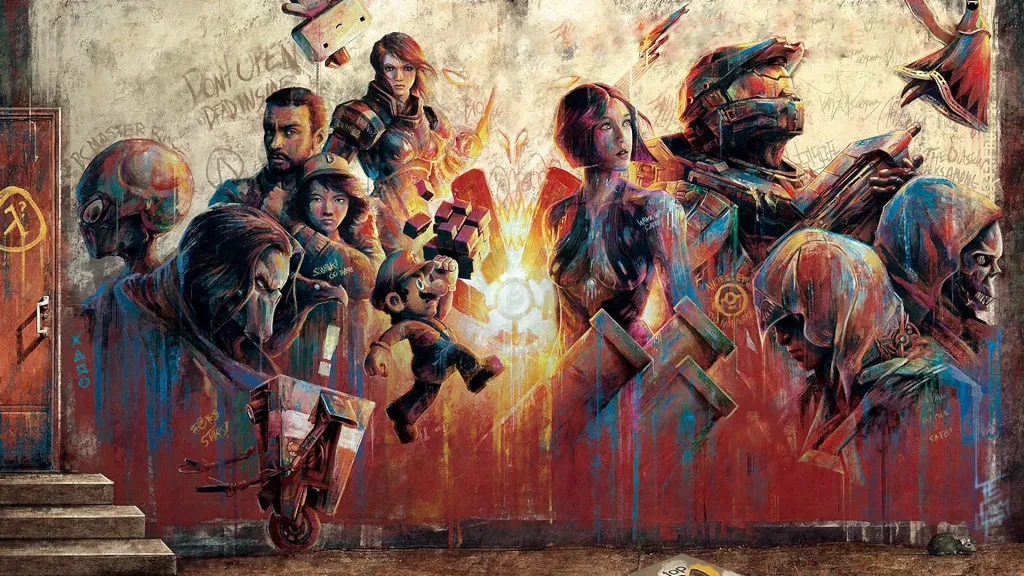Well, here’s the second part of the article. The first part can be found HERE.
6. The Sims.
 I’m sure everyone is familiar with The Sims. This iconic single-player life simulation game, developed by Maxis under the guidance of game designer Will Wright and published by Electronic Arts, offers a truly unique gaming experience that stands out from anything else on the market. While some players love it and others might not, there’s no denying its creativity and lasting appeal. Personally, I’ve been playing it since The Sims 2 on discs, but my enjoyment has evolved—now, I love creating a variety of characters, exploring different hobbies and interests, and developing intriguing storylines. It’s like having your own personal dollhouse, but with endless possibilities.
I’m sure everyone is familiar with The Sims. This iconic single-player life simulation game, developed by Maxis under the guidance of game designer Will Wright and published by Electronic Arts, offers a truly unique gaming experience that stands out from anything else on the market. While some players love it and others might not, there’s no denying its creativity and lasting appeal. Personally, I’ve been playing it since The Sims 2 on discs, but my enjoyment has evolved—now, I love creating a variety of characters, exploring different hobbies and interests, and developing intriguing storylines. It’s like having your own personal dollhouse, but with endless possibilities.
The Sims 3 is another gem in the series, continuing the legacy with even more depth. Released on June 2, 2009, for Windows and Mac OS X, and later for consoles like PlayStation 3, Xbox 360, and others, The Sims 3 allows players to take control of one or more Sims, guiding them through life’s daily challenges. From helping them develop skills and pursue careers to fostering relationships and designing their dream homes, the game lets you create a world of your own. It’s non-linear, offering no defined storyline, which means you can immerse yourself in this world for as long as you want, continually shaping the lives of your Sims.
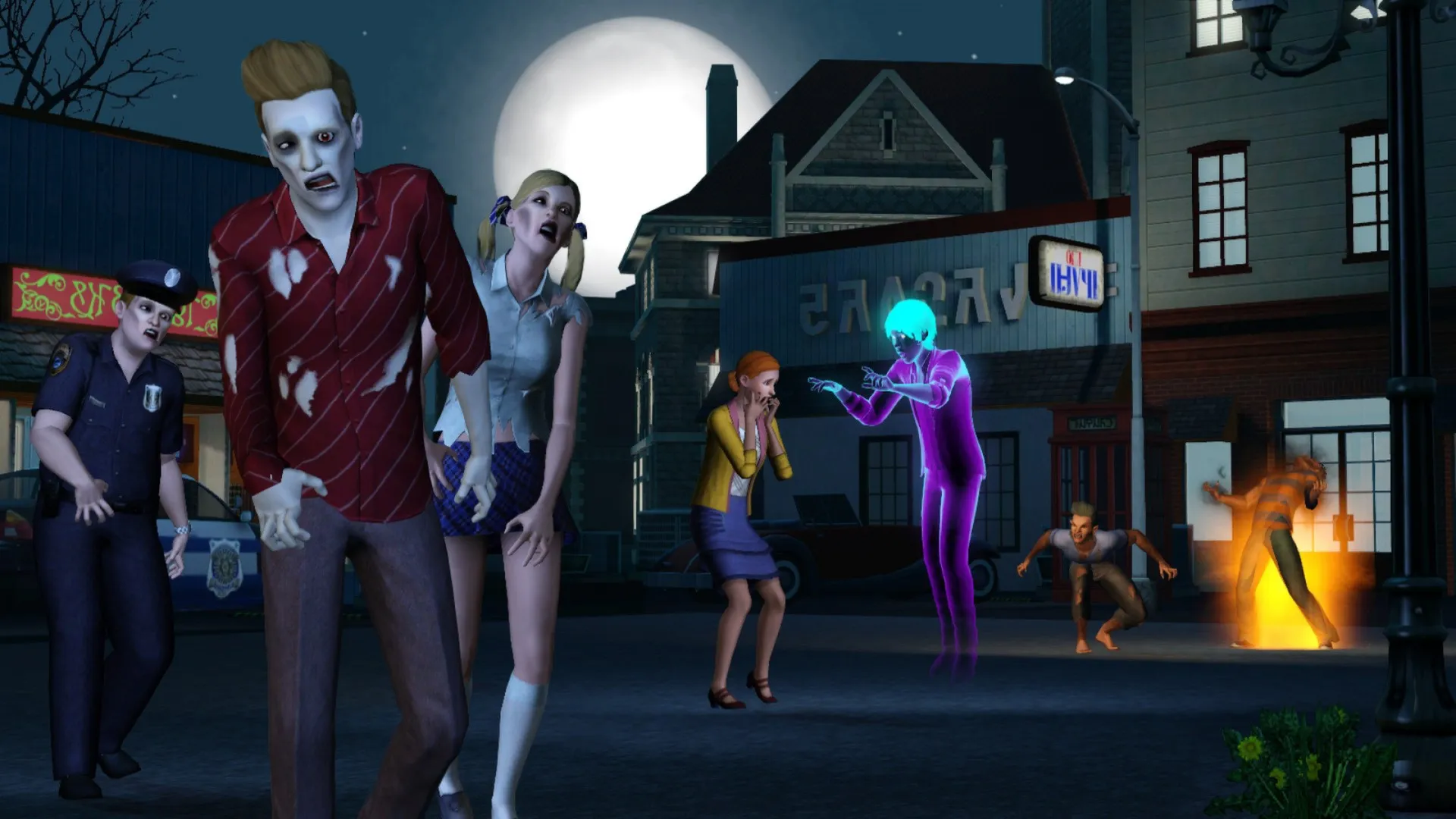
Then came The Sims 4, which builds upon its predecessors with even more flexibility and customization. There’s still no clear plot or set end goal, and you can control up to eight Sims at once. The goal is entirely up to you, whether it’s guiding them through personal growth, creating meaningful relationships, or just having fun with their whims. One of the best features in The Sims 4 is the construction editor, which lets you design homes in any style you choose and furnish them exactly how you want, giving you the ultimate freedom to build and manage your Sims’ lives.
Whether you’re looking to create dramatic life stories, casual play, or design your dream house, The Sims series offers a dynamic, open-ended world that lets you shape everything down to the smallest detail. It’s the perfect game for anyone who loves to explore their creativity and get lost in a world where the possibilities are endless.
7. Layers of Fear.
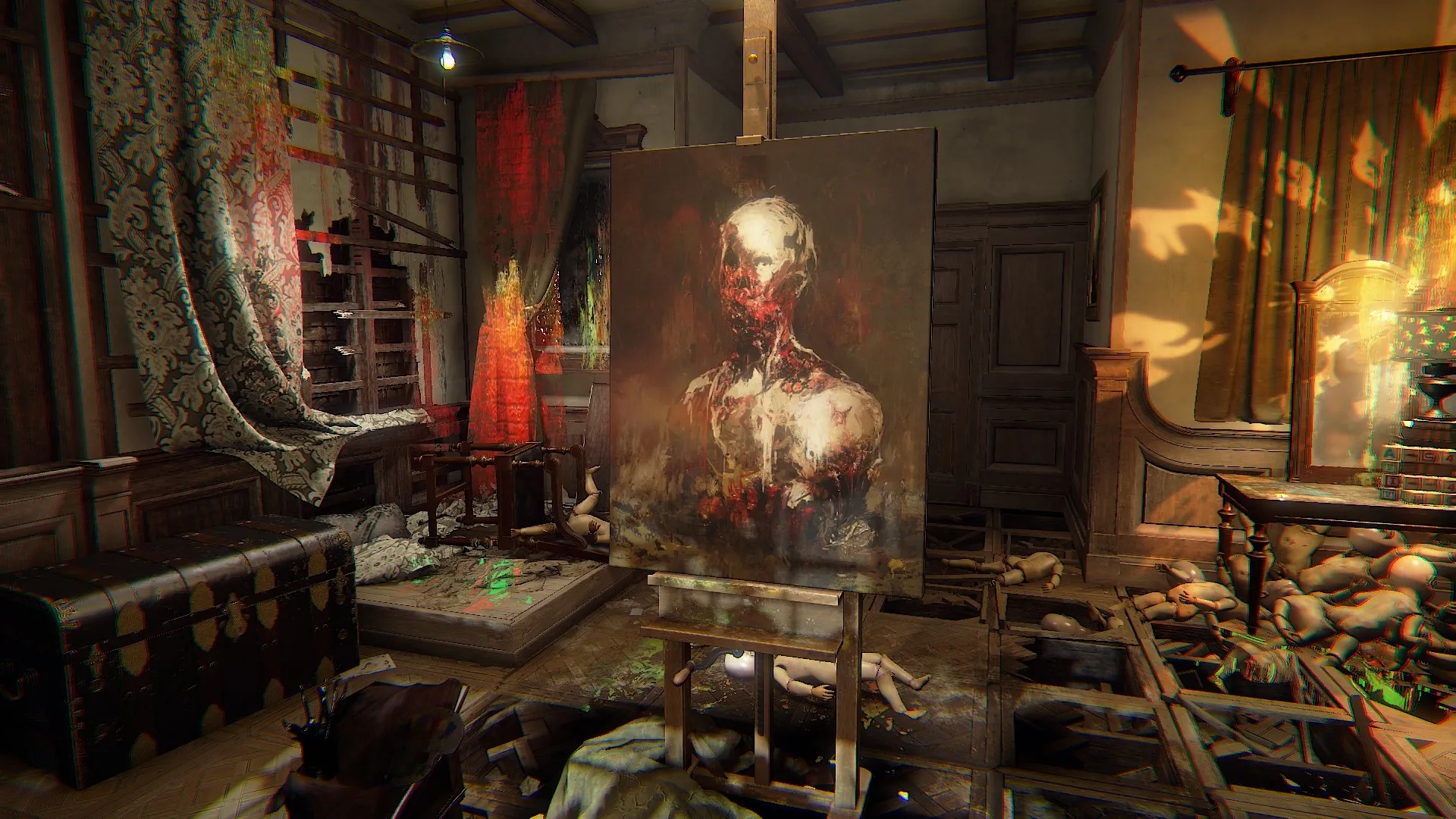
One of my all-time favorite games, Layers of Fear, has everything I love—puzzles and riddles that aren’t just optional, but essential to solving the mystery at hand. The game’s focus on exploration, psychological depth, and the chilling story of a disturbed artist makes it a must-play for anyone who enjoys unraveling dark secrets. You walk through the house of a psychotic artist, piecing together his past, his suffering, and his unraveling mental state in a series of stages. The atmosphere is what really gripped me—at times it’s unsettling, and yes, there are some jump scares, but it’s the haunting music that kept me immersed in the experience.
Layers of Fear is a psychological horror game developed by the Polish studio Bloober Team and published by Aspyr. It was first released on February 16, 2016, for Windows, Linux, and macOS, and later for PlayStation 4 and Xbox One. The game received an expanded version, Layers of Fear: Legacy, which was released for the Nintendo Switch on February 21, 2018.
The game centers on an artist struggling with mental illness as he tries to complete his masterpiece. The player takes on the role of this artist, navigating through a Victorian mansion filled with unsettling visual and auditory clues. As you explore the mansion, you’ll uncover disturbing secrets about the artist’s troubled past and his family’s tragedy. The mansion itself reflects his descent into madness, constantly shifting and changing in ways that challenge your perception of reality. These twists and turns in the environment create new puzzles, keeping the player on edge and invested in the game.
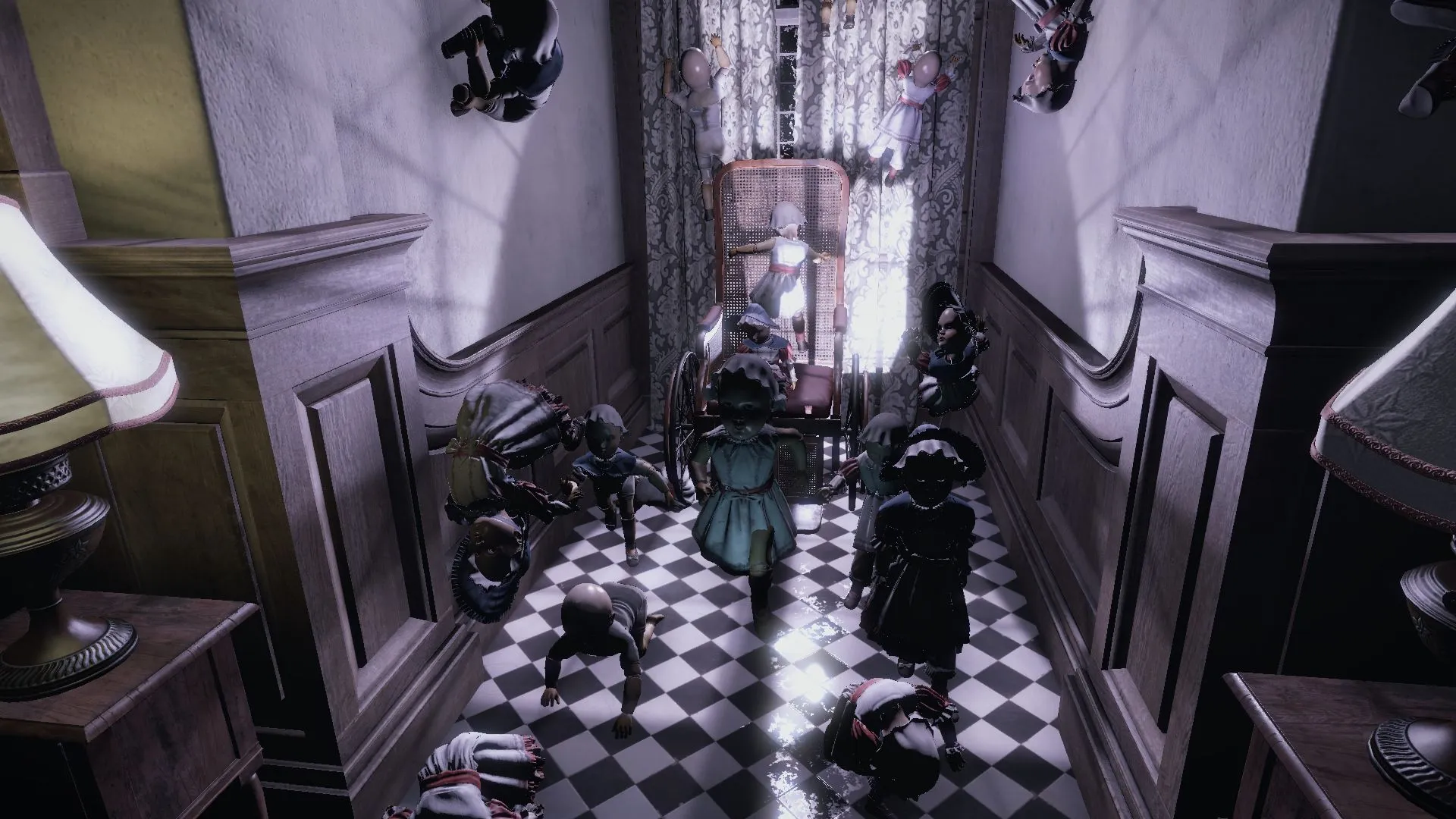
In Layers of Fear, the game’s core mechanics are built around exploration and solving puzzles to uncover parts of the artist’s life and mental breakdown. The mansion is full of visual cues, notes, and drawings, each of which sheds light on the dark, tragic past of the protagonist. The game is divided into six chapters, with each chapter introducing a new item needed to complete the artist’s painting. Each chapter also reveals more about the artist’s life, and as you explore, you start to unravel the mystery of the tragedy that affected his family. These discoveries come in the form of memories and notes scattered around the house, sometimes accompanied by chilling dialogue.
One of the most intriguing aspects of Layers of Fear is its multiple endings. Your choices throughout the game influence the outcome, and depending on your actions, you’ll get one of three main endings. While the setting of the game remains the same—an eerie, ever-changing mansion—the episodes feel fresh and disorienting, as the environment constantly shifts to match the protagonist’s growing instability.
The Inheritance DLC, released on August 2, 2016, serves as a direct sequel, where you control the artist’s daughter. Returning to the same mansion, she relives the traumatic memories of her childhood and tries to make sense of her father’s past, ultimately seeking closure and forgiveness. It adds an additional layer to the story, deepening the mystery and emotional impact.
I highly recommend Layers of Fear to anyone who loves psychological walkthroughs with elements of horror. The game’s atmosphere, the dark narrative, and the puzzles will keep you hooked from start to finish. It’s not just a game; it’s an experience that will linger long after you’ve completed it.
8. The Vanishing of Ethan Carter
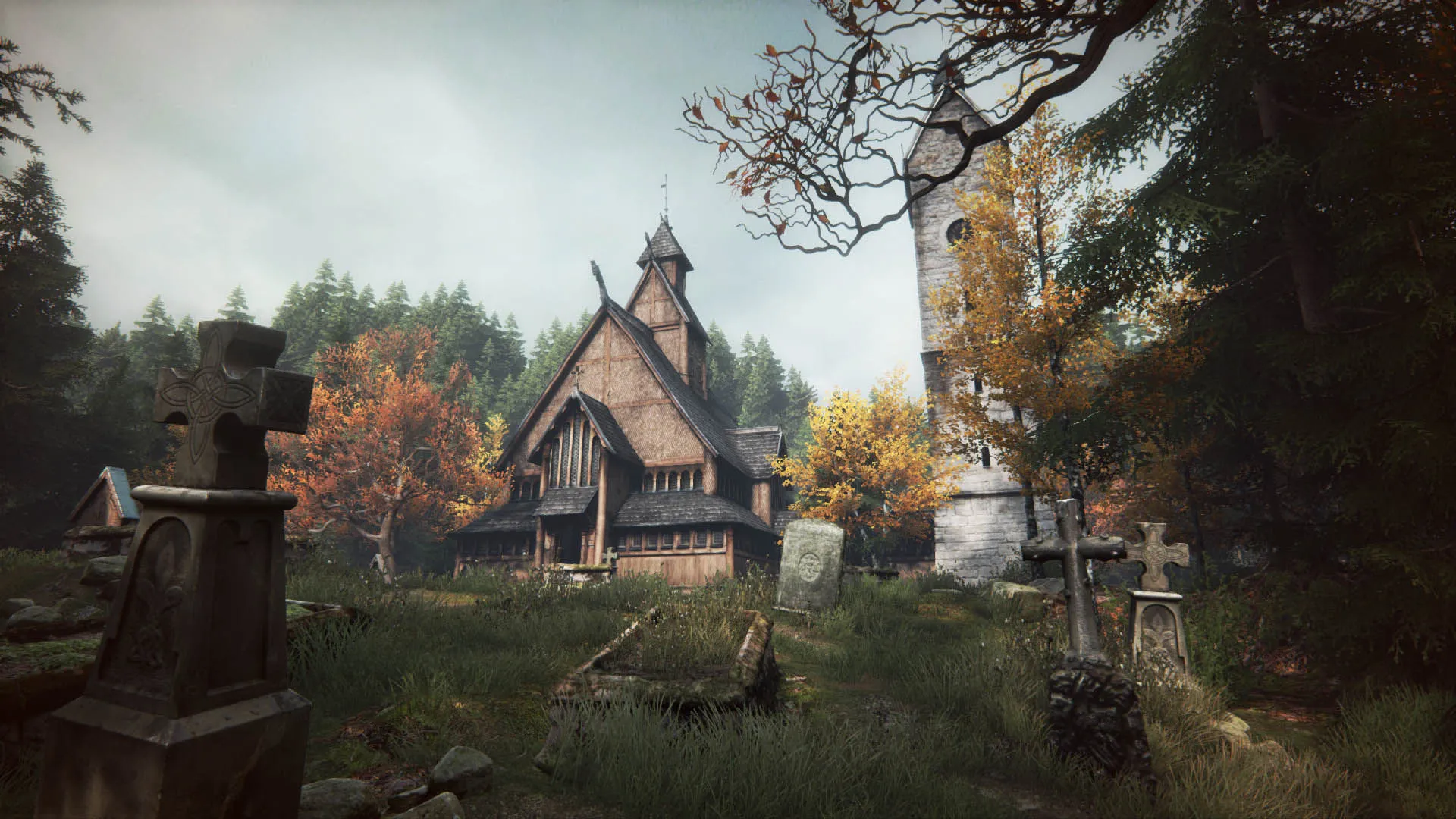
Continuing the theme of games filled with puzzles, mysticism, and elements of horror, The Vanishing of Ethan Carter is a game that can capture you with its stunning visuals and intricate gameplay, often leaving you wandering through a labyrinth of clues, trying to find your way back to the right path. For anyone who has ever dreamed of stepping into the shoes of a detective investigating disappearances, murders, and conspiracy, this game will truly immerse you.
The Vanishing of Ethan Carter is a first-person, narrative-driven adventure game developed by the Polish studio The Astronauts. In this game, you take on the role of Paul Prospero, a private detective with psychic abilities, who is tasked with investigating the mysterious disappearance of a young boy named Ethan Carter. The story takes place in the eerie, quiet town of Red Creek Valley, Wisconsin, where strange events are unfolding, and something sinister seems to be lurking beneath the surface.
The game features an open world, allowing players to freely explore the environment, although there are some artificial limitations in place. As you explore, you’ll come across various items and pieces of evidence that tie into the mysterious events occurring in the town. What sets this game apart from other mystery thrillers is the protagonist’s psychic abilities, which allow him to visualize past events related to the items he discovers. By carefully examining the environment and interacting with these clues, players are led through a series of complex puzzles, each revealing more about the story’s dark secrets.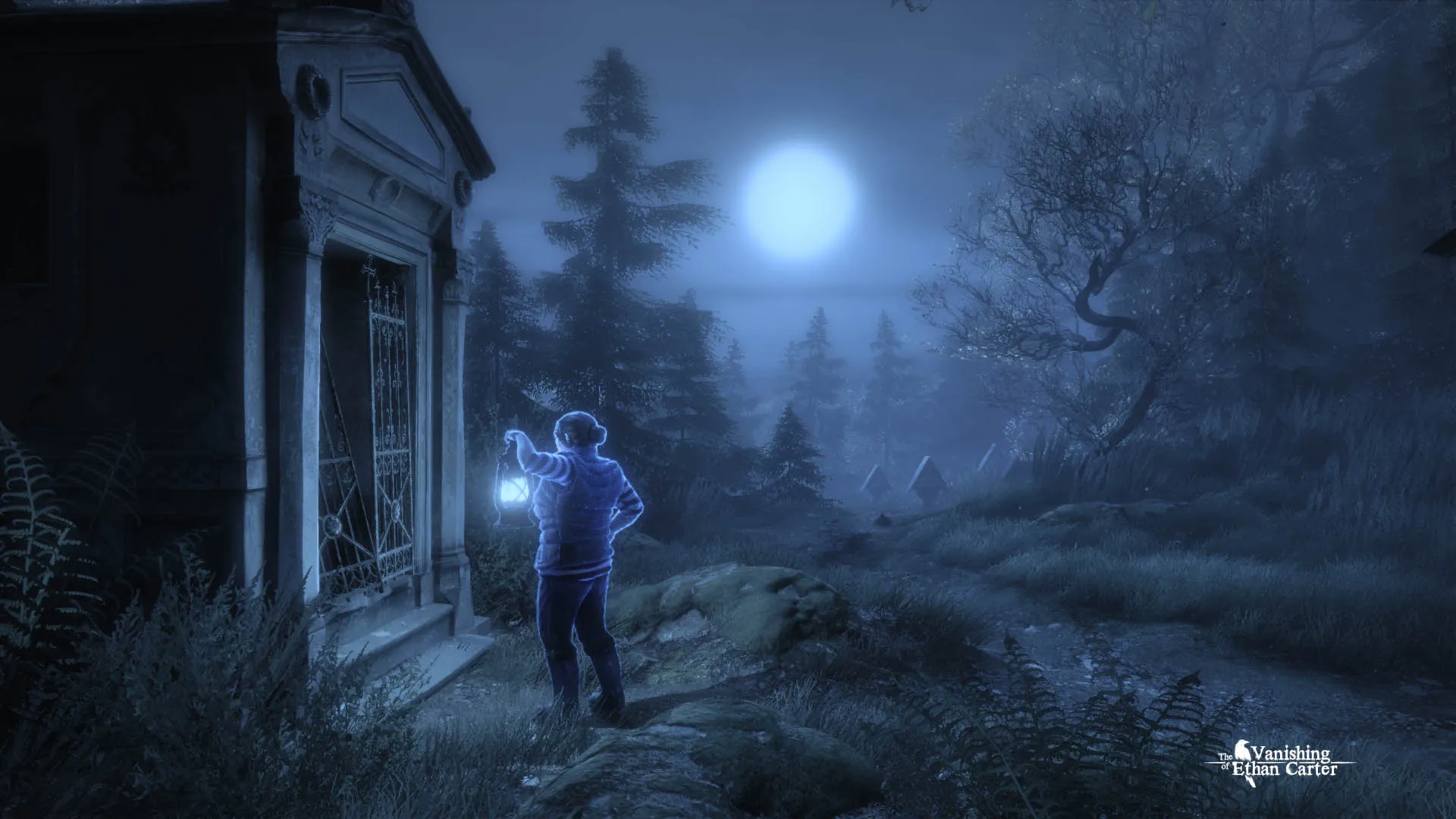
One of the core mechanics in the game involves reconstructing sequences of events. As you uncover new clues, you’ll need to arrange them in a chronological order to reconstruct the events that took place. This process requires careful thought and attention to detail, as you must place numbered markers above each character to represent the order of their actions. Successfully solving these puzzles rewards you with new story sequences, further immersing you in the mystery of Ethan Carter’s disappearance.
What truly makes The Vanishing of Ethan Carter stand out is its atmosphere. The game offers a hauntingly beautiful world filled with intricate details, and the eerie vibe of Red Creek Valley adds to the unsettling sense of mystery. There are no traditional combat mechanics—this is a game all about exploration, observation, and puzzle-solving, which makes each discovery feel that much more rewarding.
The game also provides subtle guidance as you progress. To solve the next mystery or murder, you must first unravel the previous one. If you miss any side quests or important clues, the game will offer you a map showing all of the key locations where actions need to be taken, ensuring that you never get completely lost in the vast world.
For anyone who enjoys atmospheric puzzle games with a touch of the supernatural, The Vanishing of Ethan Carter is a must-play. Its blend of gorgeous scenery, engaging story, and mind-bending puzzles creates an unforgettable experience that will keep you on the edge of your seat until the very end.
9. Dear esther
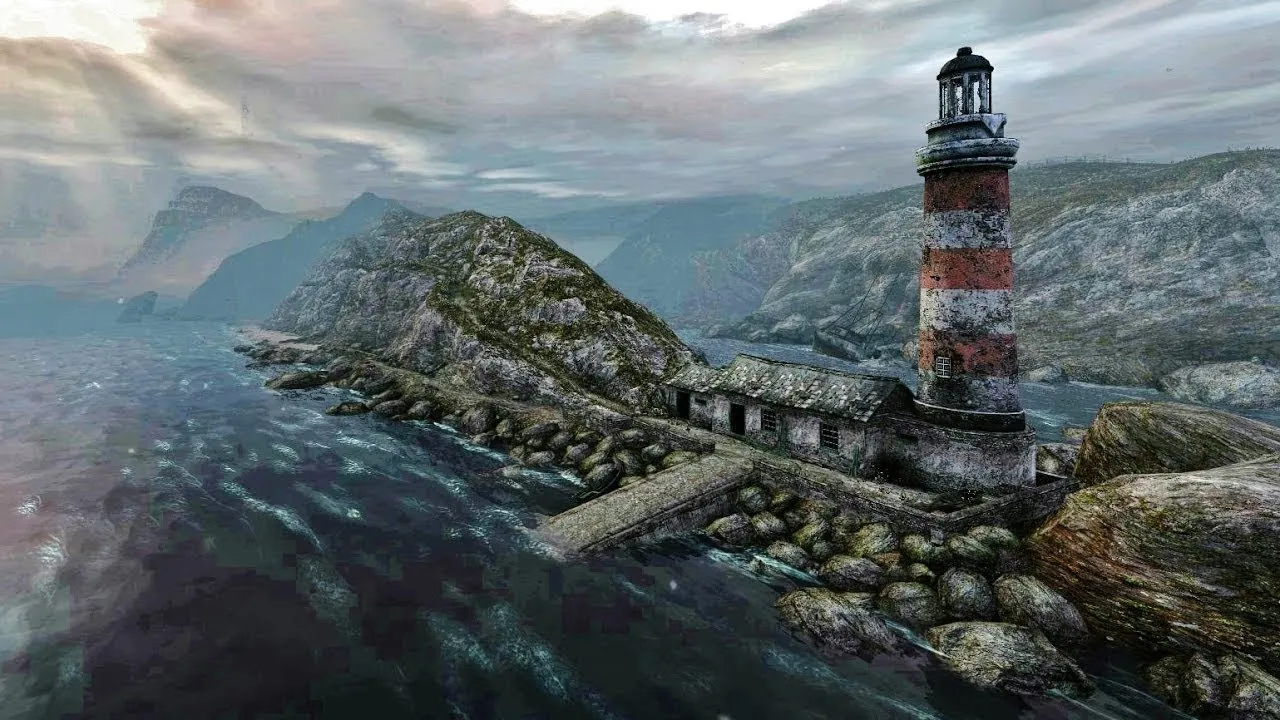
Dear Esther offers a unique and contemplative experience for players who enjoy wandering through breathtakingly beautiful landscapes and uncovering fragments of a mysterious story. Unlike other games, where you’re thrust into action, Dear Esther invites you to take your time, exploring tranquil and isolated locations while piecing together a narrative that’s revealed slowly through exploration. With no horror elements, the game provides a meditative atmosphere where the intrigue lies in the setting itself and the cryptic letters scattered throughout the world.
Dear Esther is an experimental adventure game developed by the independent studio The Chinese Room for Microsoft Windows, macOS, and Linux. Originally released in 2008 as a modification for the Half-Life 2 engine, the game was later reworked and released as a standalone title in February 2012. It was distributed on platforms such as Steam and GOG, receiving acclaim for its atmospheric storytelling and visual design.
Set on a desolate and beautiful island, Dear Esther invites players to explore its rugged terrain, where each step brings them closer to unraveling a story through the voice of a mysterious narrator. The narrator reads fragments of a letter addressed to a woman named Esther, offering a glimpse into a series of tragic and intertwined events. There are no puzzles or enemies here—just the player’s journey through a world that feels both serene and unsettling, all while hearing the fragmented memories of the narrator.
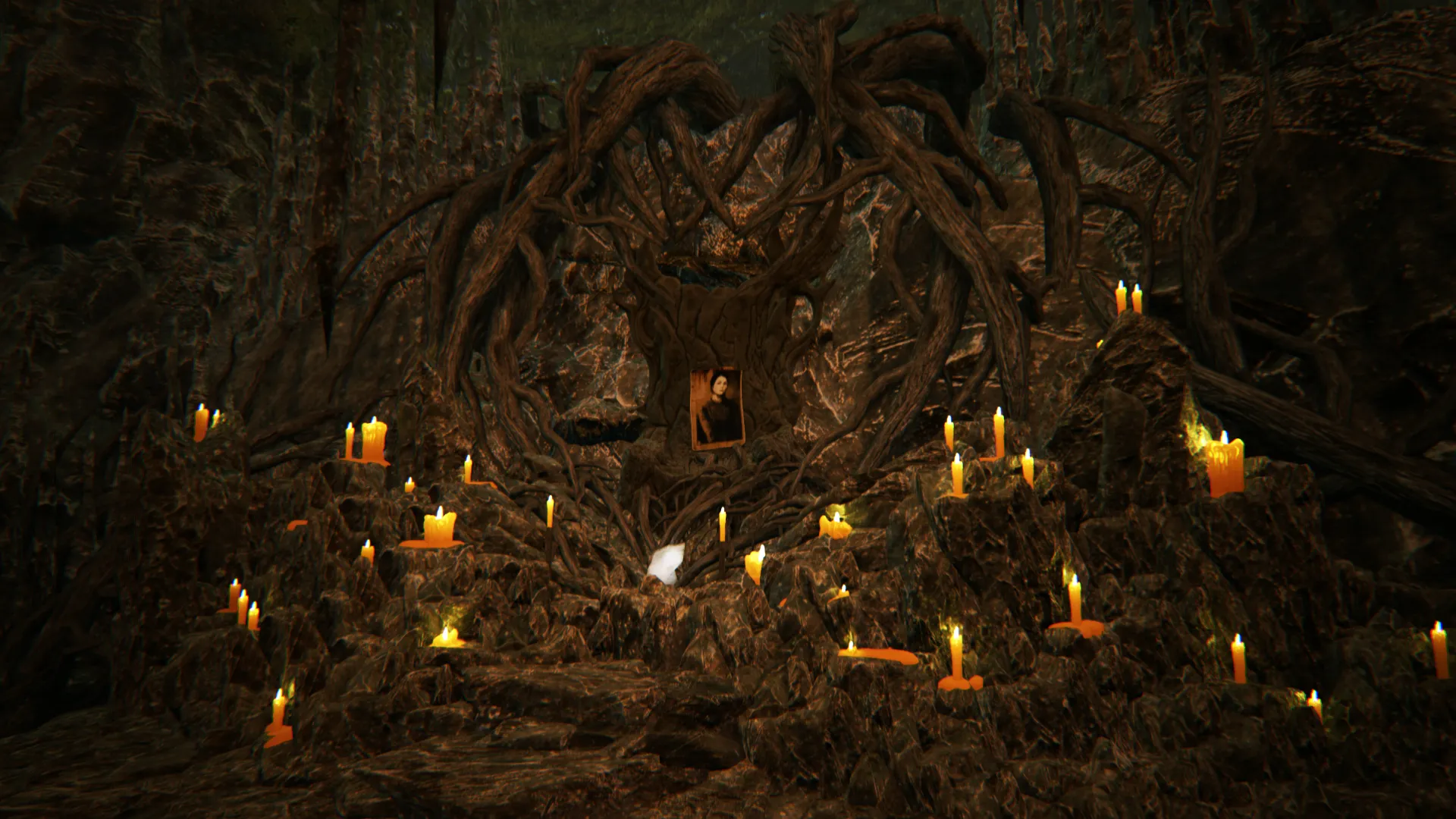
The goal of the game is simple: make your way to a radio tower with a flashing red light. But this journey is more about exploration and discovery than achieving any specific objective. As the player explores the island, they encounter monologues that gradually reveal the story. The narrator speaks of several key figures, including Donnelly, the man who first discovered the island; Paul, a drunk driver whose accident may have led to Esther’s death; and Jacobson, an eighteenth-century shepherd who once lived on the island. These fragmented voices weave a complex tapestry of loss, guilt, and memory.
As players traverse the island, they’ll encounter a variety of abandoned structures, old shipwrecks, and underground caves. Some of the caves are adorned with strange fluorescent markings—chemical formulas, diagrams, and images of neurons and bacteria—which hint at something larger and more enigmatic behind the island’s history. Occasionally, faint human-like figures can be seen in the distance, but they vanish when approached, adding an eerie, almost spectral quality to the game.
Throughout Dear Esther, the monologues become increasingly disjointed, and the lines between the narrator’s thoughts blur, making it difficult to discern which character is speaking. This reflects the protagonist’s fractured mind and the disorienting nature of the island itself. The game encourages introspection, drawing players into its dreamlike world, where the story unfolds more through the environment and the narrator’s voice than through traditional gameplay mechanics.
For players who enjoy atmospheric exploration and narrative-driven games with no combat or puzzles, Dear Esther offers a deeply immersive and reflective experience. The beauty of the island, coupled with the haunting mystery of the letters and the narrator’s fragmented monologue, creates an unforgettable journey that stays with you long after the game ends.
10. Kholat
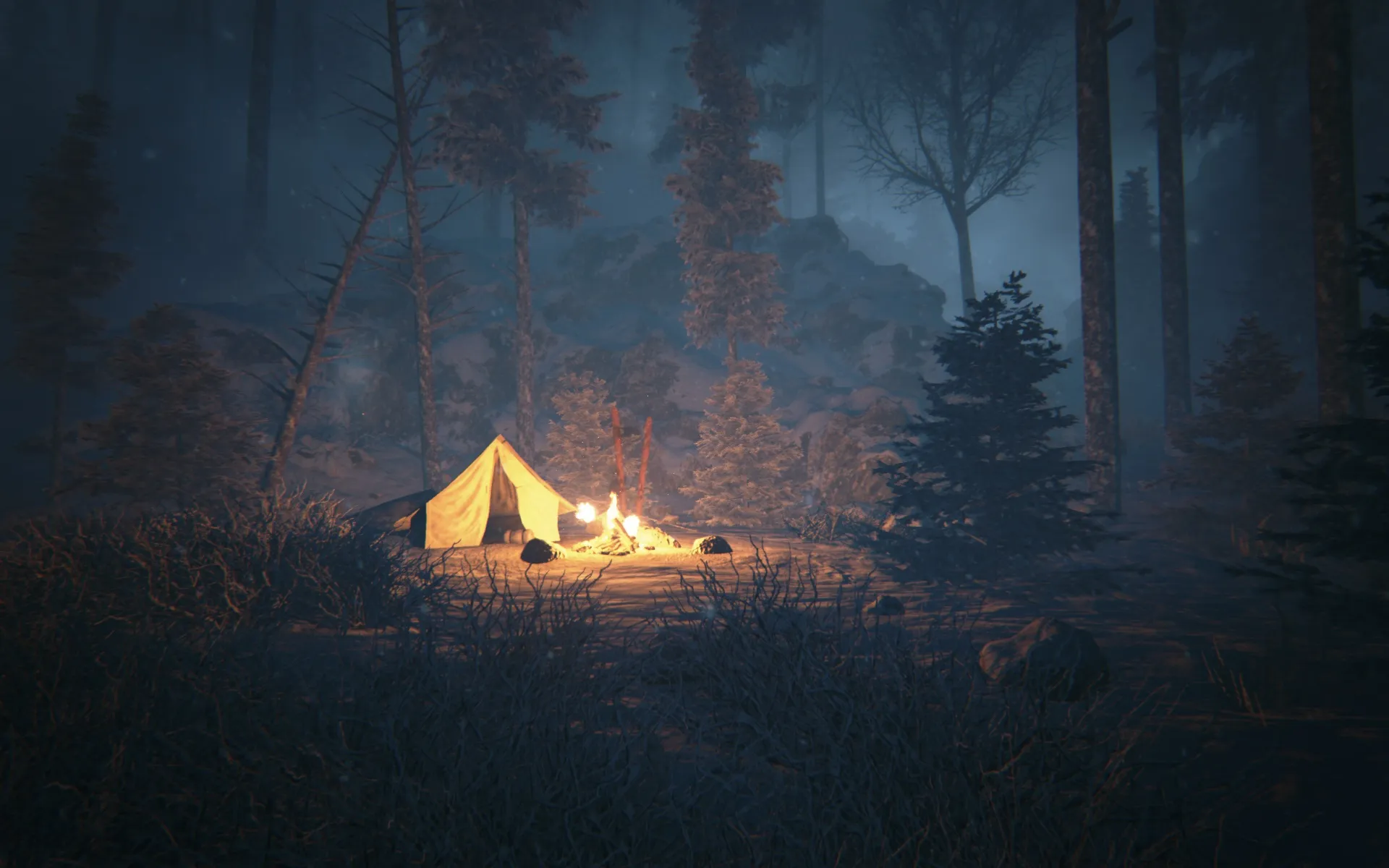
I don’t know if you’re familiar with the story or not, but we have one of the most mysterious and chilling tales in our country—the story of the “Dyatlov Pass.” This tragic expedition, which ended in death, still holds many unanswered questions, and to this day, we may never fully uncover the truth behind it. The mystery remains unsolved, and speculation runs rampant.
However, it’s important to note that while Kholat is inspired by real events, it’s not a documentary. The game takes creative liberties and weaves its own version of the mystery, blending elements of horror and the supernatural with the unknown. So, don’t expect everything in the game to be an accurate retelling of what happened. Instead, think of it as an interpretation based on different theories surrounding the Dyatlov Pass incident.
Kholat is a survival horror game developed by the Polish indie studio IMGN.PRO. The game immerses players in the eerie and desolate landscape of the Ural Mountains, where you take on the role of a protagonist searching for clues about the disappearance of a group of nine Russian students in February 1959 on Kholat Syahla (or “Dead Mountain”). This event, known as the Dyatlov Pass incident, involved the disappearance of ten hikers, nine of whom were found dead under mysterious circumstances. The tenth student had returned early due to illness, and his survival raised further questions. Kholat draws directly from this real-life tragedy, offering a fictionalized yet chilling journey through its possible causes.
Released on Steam on June 9, 2015, Kholat quickly gained attention for its atmospheric world and compelling narrative. The game later expanded to the Nintendo Switch in 2020, and even made its way to Japan that same year, captivating players worldwide.
What makes Kholat stand out is its unique blend of mystery, horror, and supernatural elements. The developers have created a deeply atmospheric world that is both beautiful and unsettling. As you explore the mountain, you’ll hear the voice of the narrator (voiced by the iconic Sean Bean), who guides you through the chilling terrain, speaking in cryptic riddles and warnings. His voice often calls you to hurry, or else suffer dire consequences, adding a layer of tension as you continue your search.
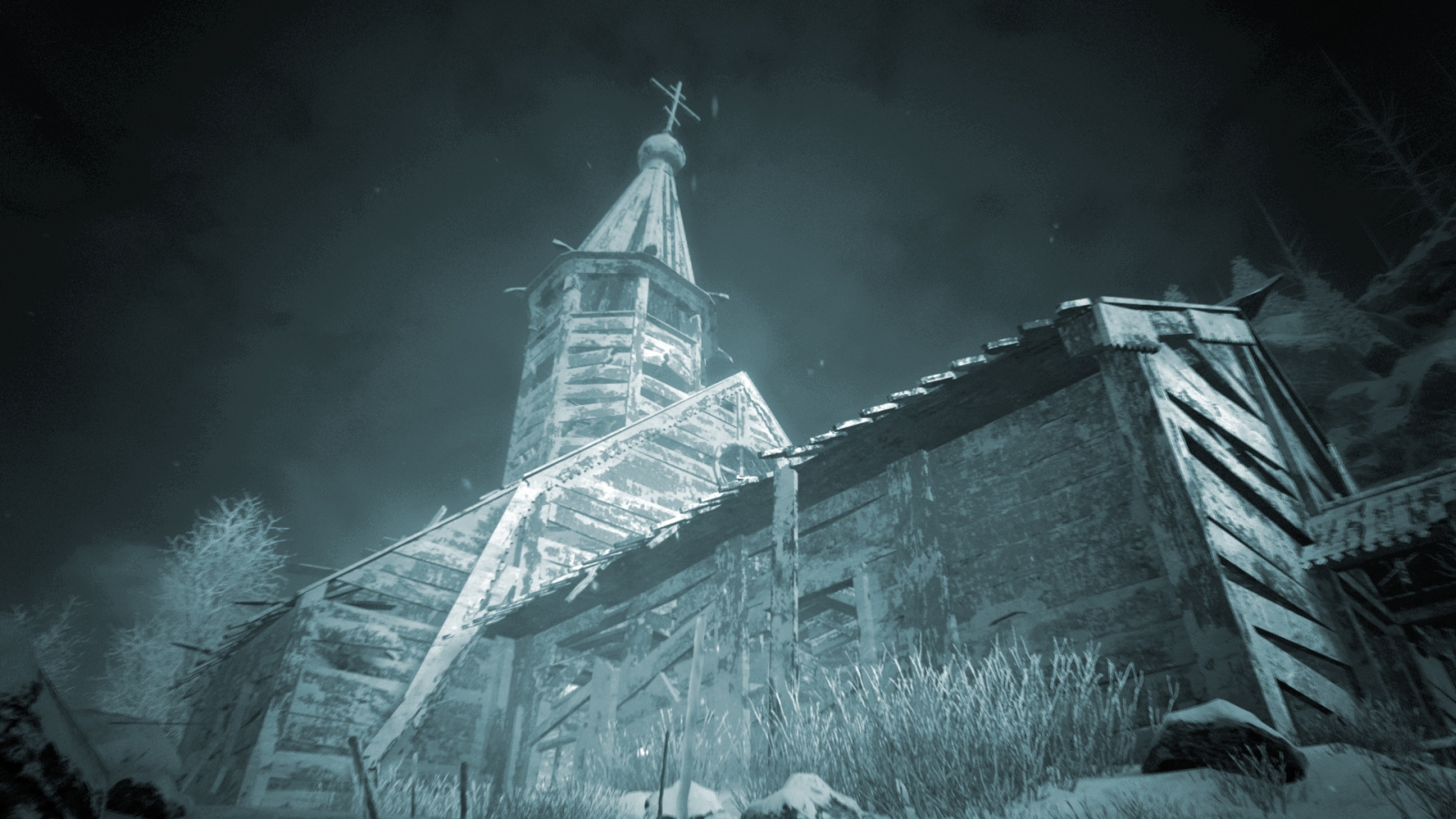 The narrative dives deep into a mystical interpretation of the Dyatlov group’s death, weaving together elements from various religious cults, particularly the Mansi people who once inhabited the region. The game is filled with pagan totems, ancient temples, and eerie monuments that hint at the darker side of the mountain’s history. As you progress, you’ll uncover notes and records referencing things like “Revived Corpses in Siberia,” adding to the sense that something truly sinister is at work.
The narrative dives deep into a mystical interpretation of the Dyatlov group’s death, weaving together elements from various religious cults, particularly the Mansi people who once inhabited the region. The game is filled with pagan totems, ancient temples, and eerie monuments that hint at the darker side of the mountain’s history. As you progress, you’ll uncover notes and records referencing things like “Revived Corpses in Siberia,” adding to the sense that something truly sinister is at work.
Visually, Kholat is hauntingly beautiful, thanks to the power of the Unreal Engine 4. The game captures the desolate, frozen landscape of the Ural Mountains, with snowstorms, dark forests, and craggy cliffs. You can almost feel the bitter cold and isolation in every corner of the environment. The graphics serve to immerse you in the feeling of being completely alone in a vast, unforgiving wilderness.
The sound design plays a crucial role in creating the tense atmosphere of the game. Whispers, distant screams, and unnerving sounds echo in the mountains, heightening the sense of dread. At times, the music will swell and pulse violently, adding to the anxiety and the constant feeling that something terrifying is about to happen.
As you explore, you’ll encounter various “landmarks” on the mountain that trigger unnerving events. From monsters emerging through a thick, orange fog to doors slamming shut or entire houses shaking violently, these moments keep you on edge, never knowing what to expect next. The suspense is palpable as you search for answers, but the game constantly reminds you that there’s more than just nature at play on this deadly mountain.
In conclusion, Kholat is more than just a game about a real-life tragedy—it’s a psychological horror experience that leaves players questioning what’s real and what’s myth. Whether you’re familiar with the Dyatlov Pass incident or not, Kholat will captivate you with its eerie atmosphere, haunting visuals, and deeply immersive storytelling. If you enjoy exploring mysteries, uncovering supernatural elements, and getting lost in a world that’s both beautiful and terrifying, Kholat is definitely worth your time.

